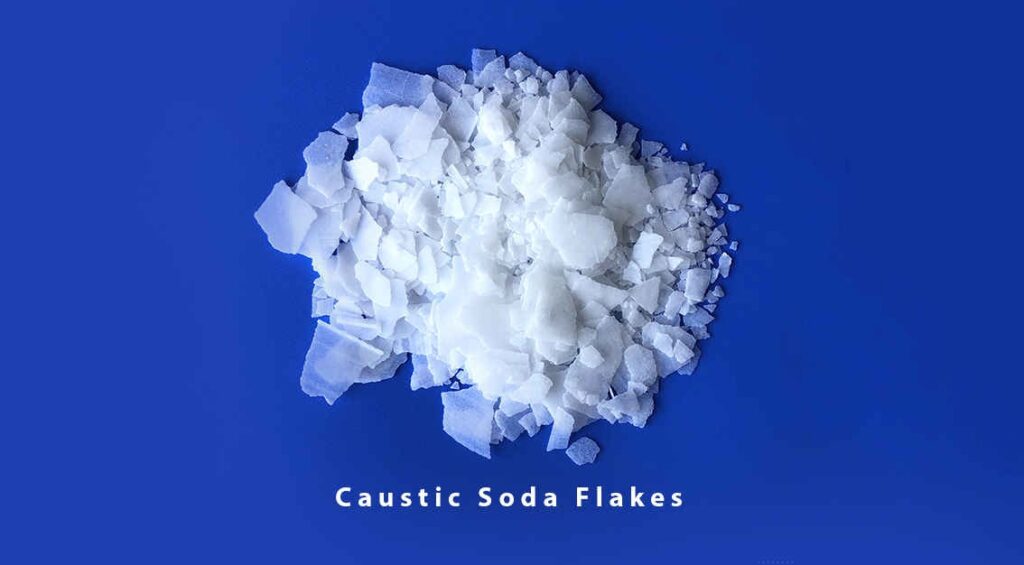
Caustic soda, also known as sodium hydroxide (NaOH), is a highly versatile and essential industrial chemical widely used in manufacturing, water treatment, and chemical processing. It is a strong alkali with excellent solubility in water and the ability to neutralize acids. Caustic soda is produced primarily through the electrolysis of salt (sodium chloride) and is available in solid flakes, pellets, or liquid solutions. It plays a critical role in industries such as pulp and paper, textiles, soap and detergents, petroleum refining, and aluminum production, where it acts as a key reagent for cleaning, processing, and refining operations.
Setting up a caustic soda production plant involves securing a reliable salt supply, installing chlor-alkali electrolysis units, and ensuring efficient handling and storage systems for both caustic soda and by-products like chlorine and hydrogen. The project requires careful consideration of safety, energy efficiency, and environmental regulations to achieve sustainable and cost-effective operations.
IMARC’s new report titled “Caustic Soda Production Cost Analysis 2025: Industry Trends, Plant Setup, Machinery, Raw Materials, Investment Opportunities, Cost and Revenue” provides a comprehensive roadmap for setting up a caustic soda production plant. The study encompasses all the essential information needed to enter the caustic soda industry, including capital investment, operating costs, raw material requirements, and profit projections. The caustic soda production cost analysis offers detailed insights into cost structures and economic feasibility, helping stakeholders make informed decisions. It is a valuable resource for entrepreneurs, investors, researchers, consultants, business strategists, and anyone with an interest or stake in the caustic soda sector.
Key factors for setting up a caustic soda production plant:
- Market Research
The caustic soda industry is witnessing strong growth driven by expanding demand from end-use sectors such as chemicals, textiles, alumina, and pulp and paper. Rising industrialization and urbanization, particularly in emerging economies, are increasing the consumption of cleaning agents, construction materials, and water treatment chemicals—all of which rely on caustic soda. Additionally, global environmental regulations encouraging cleaner production methods are fostering the adoption of membrane cell technology, which offers improved energy efficiency and lower emissions. The growing demand for aluminum, driven by renewable energy and electric vehicle sectors, further boosts caustic soda consumption in alumina extraction. Continuous investments in capacity expansion and process optimization are expected to sustain long-term industry growth worldwide.
The report offers an exhaustive overview of the global caustic soda industry, including a detailed breakdown by segments and regions within the sector. It also includes in-depth analyses of prices involved, market trends and historical data and forecast.
- Market Forecast
- Price Analysis
- Market Breakup by Region
- Market Breakup by Segment
- Market Trends
Request for a Sample Report: https://www.imarcgroup.com/caustic-soda-manufacturing-plant-project-report/requestsample
- Planning and Designing
A detailed and up-to-date business plan is indispensable for mapping out the steps to establish and operate a caustic soda production facility. This report offers in-depth details about the process flow and the various unit operations involved in a caustic soda production plant.
- Technical Tests
- Quality Assurance Criteria
- Mass Balance and Raw Material Requirements
- Unit Operations Involved
- Product Overview
- Legal and Regulatory Compliance
Understanding and complying with the intricate framework of business laws and regulations is a vital aspect of establishing a caustic soda production facility. This requires a detailed knowledge of legal obligations, such as labor laws, environmental standards, tax policies, and industry-specific regulations.
- Plant Requirements and Costs
The report offers a detailed location analysis, including insights into land selection, key criteria, location importance, environmental considerations, and associated costs for establishing a caustic soda production facility. It also provides information on plant layout and the factors that impact its design.
- Human Resource Requirements and Costs
- Utility Requirements and Costs
- Transportation Requirements and Costs
- Packaging Requirements and Costs
- Raw Material Requirements and Costs
- Machinery Requirements and Costs
- Plant Layout
- Land, Location and Site Development
- Hiring and Training
Effective workforce planning and recruitment strategies are critical for assembling a skilled and efficient team to manage a caustic soda production plant. This process includes identifying the specific skills and qualifications needed for different roles and anticipating future staffing requirements based on production goals and business expansion.
- Developing Health and Safety Protocols
- Implementing Training Programs for Employees
- Complying with Labor Laws and Regulations
- Supply Chain Management
Building strong partnerships with suppliers and vendors is crucial to maintaining a dependable and cost-efficient supply chain. This requires choosing partners who can reliably deliver high-quality raw materials and components at competitive rates.
- Planning Logistics and Transportation Networks
- Implementing Efficient Inventory Management Systems
- Project Economics
This entails a thorough analysis of the costs associated with a caustic soda production plant, covering capital expenditure (CapEx), operating expenditure (OpEx), income forecasts, taxation, depreciation, liquidity, profitability, payback period, net present value (NPV), uncertainty, sensitivity assessments, etc. In addition to this, it includes an in-depth review of financial assistance options and a comprehensive list of certifications necessary for establishing the plant.
- Financial Analysis
- Profit Projections
- Taxation and Depreciation
- Revenue Projections
- Expenditure Projections
- Operating Costs
- Capital Investments
- Marketing and Distribution Strategies:
Creating a robust marketing strategy and establishing strong brand positioning are vital for building a production plant’s market presence. This process includes conducting thorough market research to identify customer needs, preferences, and competitive trends.
- Identifying Distribution Channels and Sales Networks
- Leveraging Digital Marketing and E-Commerce Platforms
- Participating in Trade Shows and Industry Events
About Us:
IMARC Group is a global management consulting firm that helps the world’s most ambitious changemakers to create a lasting impact. The company excel in understanding its client’s business priorities and delivering tailored solutions that drive meaningful outcomes. We provide a comprehensive suite of market entry and expansion services. Our offerings include thorough market assessment, feasibility studies, company incorporation assistance, factory setup support, regulatory approvals and licensing navigation, branding, marketing and sales strategies, competitive landscape, and benchmarking analyses, pricing and cost research, and procurement research.
Contact Us:
IMARC Group
134 N 4th St. Brooklyn, NY 11249, USA
Email: sales@imarcgroup.com
Tel No:(D) +91 120 433 0800
United States: (+1-201971-6302)


